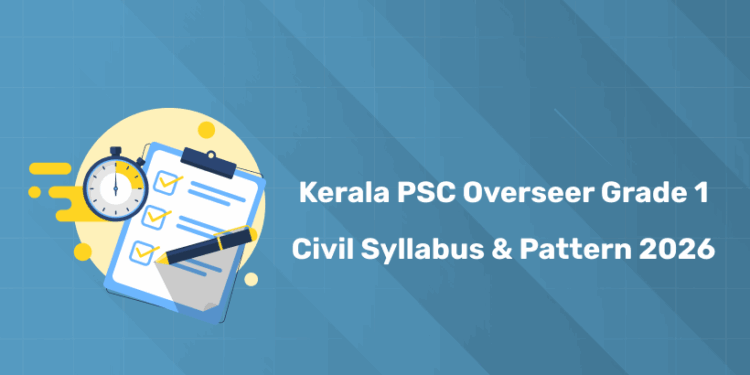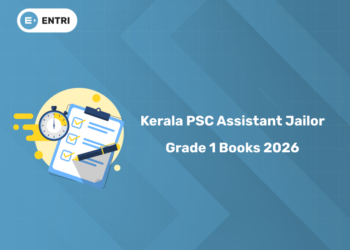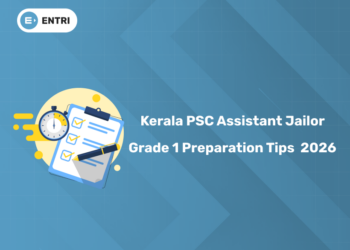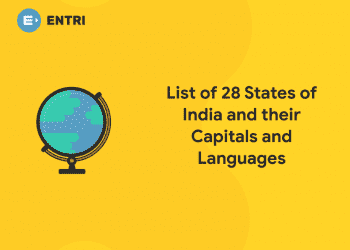Table of Contents
The Kerala PSC Overseer Grade 1 Civil Syllabus 2026 and Exam Pattern have been officially released on the Kerala PSC website. The exam will be held soon. The updated syllabus, now available in PDF format, provides a detailed overview of the topics to be covered in the exam. In this blog, we’ve updated the latest syllabus and exam pattern to help you prepare efficiently for the exam. Stay tuned for key insights and tips to enhance your preparation!
Kerala PSC Technical Exam Coaching! Prepare now!
Kerala PSC Overseer Grade 1 Civil Syllabus 2026 PDF
The Kerala PSC Overseer Grade 1 Syllabus 2026 is crucial for exam preparation. It includes topics on general knowledge, technical skills, and relevant subjects. Download the attached PDF for the official syllabus to guide your study and excel in the exam!
Kerala PSC Overseer Grade 1 Civil Recruitment Notification 2026
1: Between the period of 1858-1947, how many Viceroys ruled over India?
| Recruitment Details | Information |
|---|---|
| Exam Body | Kerala Public Service Commission |
| Department | Kerala Tourism Development Corporation Limited |
| Post Name | Overseer Grade I (Civil) |
| Category No | 462/2025 |
| Number of Vacancies | 2 (Two) |
| Pay Scale | ₹26,500 – 56,700/- |
| Application Mode | Online through One Time Registration (OTR) |
| Application Start Date | 28 November 2025 |
| Application End Date | 31 December 2025 |
| Official Website | www.keralapsc.gov.in |
Prepare for Kerala PSC Technical Exams with Entri
സർക്കാർ ജോലി എന്ന സ്വപ്നം ഇനി സ്വപ്നം മാത്രമല്ല! Join Kerala's Top-rated PSC Coaching Programs
Join NowKerala PSC Overseer Grade 1 (Civil) Exam Pattern 2026
Medium: English
Total Questions: 100
Maximum Marks: 100
Duration: 01 hour 30 minutes (90 minutes)
Question type: Objective — Multiple Choice Questions (MCQs) — each question carries 1 mark
Negative marking: 0.33 per wrong answers
| S.No | Topic | No. of Questions | Marks |
|---|---|---|---|
| 1 | Surveying | 10 | 10 |
| 2 | Building Materials | 10 | 10 |
| 3 | Building Construction | 12 | 12 |
| 4 | Mechanics | 10 | 10 |
| 5 | Mechanics of Solids | 10 | 10 |
| 6 | Estimation & Valuation | 12 | 12 |
| 7 | Irrigation Engineering | 8 | 8 |
| 8 | Geotechnical Engineering | 10 | 10 |
| 9 | Transportation Engineering | 12 | 12 |
| 10 | Environmental Engineering | 6 | 6 |
| Total | 100 | 100 |
Kerala PSC Overseer Grade 1 Syllabus 2026 – Detailed
SURVEYING
Purpose of surveying – types of survey – Levelling – Principle of levelling – parts and functions of dumpy level and telescopic leveling staff – steps involved in performing the temporary adjustments of leveling instrument – record observations in field book – compute the reduced levels of stations from field book – Classifications of levelling – steps involved in classification of levelling – principle of contouring – contour plans from given field notes.
Theodolite traversing – Principles of theodolite traversing – their parts and function – temporary adjustments and terms – fundamental lines and their relationship – horizontal angle measurement by repetition and reiteration method – steps involved in setting out angles using a theodolite – method of conducting traverse survey in the field using the theodolite – compute the co-ordinates – principle of trigonometry for determining the elevation of stations – vertical angle measurements – principle of trigonometric levelling – compute the elevations using trigonometric levelling.
CURVES – different types – elements of a simple curve – designation of a curve – setting out simple curves by offset method – from long chord, long tangents, chord produced – description of transition curves – requirement of transition curves – length of transition curves for roads – introduction to vertical curves – geometrics of a vertical curve.
Modern surveying equipments – TOTAL STATIONS, GPS AND GIS, Electronic Theodolites – Total stations – component parts – set up – working principles – maintenance of EDM instruments – temporary adjustments – measurement with total station, traverse with total station, survey station description – data gathering components – data processing components – error sources and controlling errors – field coding – field controlling – Modem for data transfer – readings with prism mode and non prism mode.
Remote sensing – Introduction and applications in Civil Engineering. Global positioning system (GPS) – fundamentals, GPS receivers, GPS observations, transformation of GPS results. Geographical information systems (GIS) – map definitions, map projections, data entry, importance, use and application of GIS in Civil Engineering. Introduction to Photogrammetry, aerial, terrestrial, applications of photogrammetry. (Marks – 8)
BUILDING PLANNING AND DRAWING
Building drawing – Conventional signs for construction materials – Building rules and Bye laws – Provision of safety for buildings, plinth area – floor area – carpet area – floor area ratio – coverage of building – height of building – building line – set back line – head room – mezzanine floor – basement floor – detached building – row houses.
Classification of Buildings and Planning requirements of building as per National Building Code / KMBR / KPBR. Plumbing layout showing water supply and sanitary fixtures of a residential building – electrical layout showing electrical fixtures and control points.
(Marks – 5)
Construction Materials
Stone
-
Classification:
-
Geological classification
-
Physical and chemical classification
-
- Characteristics of good building stone
- Varieties of stones: Granite, Trap, Basalt, Sandstone, Laterite
- Values of load-bearing capacity of stones
- Quarrying of stones: Methods – Wedging and Blasting
-
-
Explosives used
-
-
Dressing of stones
Clay Products
Bricks
- Raw materials used
- Composition of brick earth
- Manufacturing methods (Description only)
- Kiln and clamp burning
- IS specifications of bricks
- Characteristics of good bricks used for building purposes
Tiles
- Types of tiles – Characteristics – Uses
Floor, Wall and Roofing tiles, Porcelain, Vitrified and Glazed tiles - Earthenware and Stoneware pipes – Uses and Qualities
Cement
- Composition and compounds present
- Manufacturing methods
- Characteristics of cement
- Types of cement – Properties
- Tests on cement:
Consistency test, Fineness test, Specific gravity test, Setting time test, Soundness test, and Field tests - Uses of cement
Aggregates
Sand
- Sources of sand: River sand, Sea sand, and Pit sand
- Limitations of mining of sand from rivers and sea shore
- M-sand and alternatives to natural sand
Coarse Aggregates
- Materials generally used
- Requirements of good coarse aggregates
- Commonly used sizes for different applications
- Grading of coarse and fine aggregates
Mortar
- Preparation of lime and cement mortar
- Proportions of mortar for various items of work
- Tests on cement mortar
Cement Concrete
- Proportioning and ingredients
- PCC and RCC
- Water-cement ratio – Effects on strength and workability
- Characteristics of concrete and reinforcements – Preparation – Workability
- Tests on cement concrete (Laboratory and Field tests):
Slump test, Compaction factor test - Qualities of water used for mixing
- Reinforced Cement Concrete (RCC):
Qualities of materials, Types of reinforcement used, Characteristics of reinforcing materials, Preparation of concrete cubes, and Test on cubes - Chemical admixtures: Plasticizers and Superplasticizers
Timber and Wood Products
- Structural classification: Softwood and Hardwood
- Defects in timber
- Seasoning of timber
- Preservation of timber
- Wood products: Plywood, MDF, HDF, Veneer
Metals
- Ferrous metals: Wrought iron, Cast iron, Mild steel
- Special steels: High carbon steel, High tensile steel, and Stainless steel (Properties and uses only)
- Non-ferrous metals: Aluminum, Copper, Lead, Zinc, and Titanium
- Important alloys – Properties and uses
Construction Technology
Masonry
- Classification of masonry walls: Load-bearing, Non-load-bearing, and Retaining walls
- Types: Stone masonry, Brick masonry, Laterite masonry, Composite masonry
- Stone masonry: Different types, General principles, and Specifications as per relevant codes
- Brick masonry:
-
Different types of bonds for walls, piers, and junctions of walls of equal and unequal thickness – English bond, Flemish (Single and Double Flemish) bond
-
Specifications as per relevant codes
-
- Hollow block masonry: Types of hollow blocks, Methods of construction, Advantages and disadvantages compared with other types of masonry
- Solid block masonry and Interlocking block masonry
- Partition walls: Types, Materials, Requirements
- Modern methods of construction: Framed, Prefabricated, Earthquake-resistant
Damp Proof Courses (DPC)
Definition of dampness – Causes and effects
Methods of prevention: Surface treatment, Internal waterproofing courses
Prestressed Concrete
- Principle of prestressing
- Types: Internal and External
- Methods: Pre-tensioning and Post-tensioning
- Prestressed slabs and beams
Formwork
- Functions and materials used
- Requirements of good formwork
- Modern trends in materials and technology: Slip forms, PVC forms
Scaffolding, Shoring and Underpinning
- Definition, Purpose, and Function
- Requirements of materials used
Plastering and Pointing
- Materials and proportions
- Functions
- General specifications and types
Building Components
-
Different components of a building from foundation to roof and their functions
Foundations
- Functions and Classification: Shallow and Deep foundations
- Types: Spread footing, Raft-mat, Column footing, Pile foundation, and Well foundation
Flooring
- Requirements of a good floor
- Materials used for flooring
- Floor finishes: Mosaic, Marble, Granite, Ceramic tiles, Vitrified tiles, Glass, Wooden, and other modern finishes
Doors and Windows
- Positioning with respect to lighting and ventilation
- Types and sizes as per relevant codes
- Special types of doors: Flush, Revolving, Collapsible, Rolling, and Sliding doors
- Windows: Different types
- Ventilators: Different types
- Fittings for doors and windows
Lintels and Sunshades
- Types of lintels: Wooden, Stone, Brick, RCC, and RSJ lintels
- Sunshades: Canopy and Sun breakers
- Arches: Types and terms used
Vertical Transportation
- Stairs and staircases: Location, Types, Standards as per KBR
- Terminology: Tread, Rise, Going, Riser, Nosing, Width of stair, Headroom, Flight, Landing, Handrails
- Lifts and Escalators: Component parts and requirements as per NBC
- Ramps: Planning and location
- Component parts of staircases and lifts
- Types of staircases
Ceiling
- Materials used for ceiling
- False ceiling
Roof
- Definition and importance with respect to climatic conditions
- Classification: Pitched and Flat
- Types: Couple, Couple closed, and Collar roof
- Trusses for pitched roofs: Wooden and Steel trusses
- Roof coverings: AC sheets, GI corrugated sheets, Aluminum sheets, PVC sheets
- Method of arranging and fixing to battens, rafters, and purlins
- RCC roof slabs: Flat and sloped slabs, Flat slab construction
- Weatherproof course for flat roofs
- Requirements and selection of materials for good floor finish and ceiling
Theory of Structures
- Definition of force – Types of forces
- Moment of force – Types of moments – Principle of moments
- Determination of reactions of simply supported beams and overhanging beams with point loads, uniformly distributed loads, and uniformly varying loads
- Centroid of plane figures: Determination of centroid of rectangle, triangle, circle, semi-circle, and compound areas
- Definition of center of gravity (C.G.) – C.G. of combination of simple solids
Elastic Properties
- Elasticity, Stiffness, Plasticity, Toughness, Brittleness, Ductility, Malleability, and Hardness
- Simple stresses and strains: Types of stresses, Elasticity, Hook’s Law, Young’s Modulus
- Stresses and strains in uniform sections of same and composite materials (steel, aluminum, copper)
- Tensile test on ductile material (mild steel bar): Stress-strain curve – Limit of proportionality, Elastic limit, Yield point, Ultimate stress, Breaking stress, Working stress, and Factor of safety
Beams and Bending
- Classification of beams: Cantilever, Simply supported, Fixed, Overhanging, and Continuous
- Types of loading: Concentrated, Uniformly distributed, Uniformly varying load
- Shear force (S.F.) and Bending moment (B.M.): Definition, Sign conventions
- Calculation of S.F. and B.M. for cantilever, simply supported, and overhanging beams (for point load, UDL, UVL, and combinations)
- Relation between S.F. and B.M., Maximum B.M., and Point of contraflexure
Theory of Pure Torsion
- Assumptions in pure torsion – Derivation of formula – Problems
- Power transmitted by circular shafts – Problems
Thin Cylinders
- Failure of thin cylindrical shells due to internal pressure
- Circumferential and longitudinal stresses
- Changes in dimension and volume due to internal pressure
Theory of Simple Bending
- Explanation of terms: Neutral axis, Moment of resistance, Section modulus
- Assumptions in simple bending – Derivation of equation of simple bending
- Application to simple and compound sections
- Calculation of stress, section modulus, and moment of resistance
- Calculation of shear stress and drawing shear stress distribution diagram for rectangular and I-sections
Quantity Surveying
- Quantity surveyor: Duties and essential requirements
- Estimate – Types: Detailed estimate, Supplementary estimate, Revised estimate, Annual repair and maintenance
- Approximate estimate – Types and problems
- Units of measurements for different items as per standard
- Sundries, Lump sum, Lead and lift, Contingencies, Unforeseen items, Work-charged establishment
Earthwork Computation
- Methods: Trapezoidal, Mid-section, Mean section (Trapezoidal), Prismoidal formula
- Computation of earthwork from longitudinal and cross sections (no transverse slope)
- Capacity of reservoir from contour map
Methods of Taking Out Quantities
- Center line method
- Long wall–short wall method
- Computation of quantities for compound wall, steps, doors, windows, ventilators
- Cost of materials at source and at site – Conveyance charges
- Standard data book – Schedule of rates
- Lump sum items – Extra labour – Contractor’s profit
- Conveyance statement for different materials
- Schedule of rates for labour and materials
- Analysis of rates – Preparation of standard DATA of CPWD with specifications as per CPWD standard
- Rules of measurements and tolerance for wastage
- General rules for taking measurements as per CPWD
- Abstract of estimate – Preparation
Detailed Estimates
-
For buildings with:
-
Gabled roof
-
Hipped roof
-
Valley
-
Two-storied buildings (residential and office)
-
- Abstract of estimate for the same
- Detailed estimate and abstract for Septic tank and soak pit
- Detailed estimate of RCC beam, slab, and column with bar bending schedule
- Detailed estimate of aqueduct
- Detailed specifications for:
Earthwork excavation, Foundation concrete, Masonry work, DPC, Formwork, RCC, Plastering, Pointing, Flooring, Painting, and Polishing - IRC specifications for WBM road
- Preparation of plan, estimate, and documents for submission
Valuation
- Definition and Purpose
- Factors governing valuation: Life of structure, Type, Location, Maintenance, Legal control
- Scrap value, Salvage value, Market value, Book value, Sinking fund, Annuity, and Depreciation
- Methods of valuation: Rental method, Direct comparison with cost, Based on profit, Development method, and Depreciation method
- Calculation of depreciation by different methods
- Land valuation – Problems
Irrigation Engineering
Fundamentals of Irrigation and Hydrology
Definition and Scope
- Definition of irrigation – necessity, advantages, and disadvantages.
- Nature and scope of Irrigation Engineering.
- Types of irrigation:
-
-
Perennial and inundation irrigation
-
Flow and lift irrigation
-
Direct and storage irrigation
-
Water Requirement of Crops
a) Principal crops:
- Kharif and Rabi crops in India and Kerala
- Dry and wet crops
- Crop period
b) Duty of water:
- Different methods of expressing duty
- Base period
- Relationship between duty and delta
- Factors affecting duty
- Requirements for precise statement of duty
- Duty figures for principal crops
- Simple problems on duty
Hydrology – Runoff and Maximum Flood Discharge
a) Rainfall
- Types of rain gauges
- Factors for selecting suitable site for rain gauge station
- Precautions in setting and maintaining rainfall records
- Rainfall cycle
- Average annual rainfall of an area
- Methods of estimating average rainfall over a catchment:
-
-
Thiessen’s polygon method
-
b) Catchment Basin and Runoff
- Catchment area – characteristics: Good, average, bad, free catchment, intercepted catchment
- Runoff – factors affecting runoff: Nature of catchment, runoff coefficient
- Methods of estimating runoff: Empirical formulae
c) River Gauging
-
Importance and site selection
-
Open gauge well
-
Measurement of velocity: Surface floats, velocity rods, and current meter
d) Maximum Flood Discharge
-
From rainfall records using Ryve’s and Dicken’s formulae
-
H.F.L. marks and gauge readings
Diversion Headworks
a) Classification:
- Storage and diversion headworks – suitability under different conditions
- Suitable site for diversion works
- General layout of diversion works
- Component parts of a weir – brief description
b) Barrage and weirs
c) Head Regulator, Scouring Sluice, Flood Banks, and Protective Works
(Only description)
d) Percolation
- Percolation gradient and uplift pressure
- Effect of percolation on irrigation works
- Exit velocity and scour
- Protective works – solid and loose aprons
Storage Headworks
a) Dams
- Types and selection of site
- Types of survey for site selection
- Factors influencing site selection
- Site investigations
- Terminology: Full reservoir level (FRL), Maximum water level (MWL), Top bund level, Dead storage, Live storage, Freeboard
b) Evaporation
-
Evaporation losses in reservoirs (brief description)
c) Rigid and Non-rigid Dams
- Main types: Gravity dams
- Forces acting on a gravity dam
- Failure of gravity dams and remedial measures
- Elementary profile – limiting height of dam – low and high dams
- Freeboard and top width
- Sketch of practical profile of low dam
- Drainage gallery, construction joints and their functions
- Spillways (brief description)
d) Earth Dams
- Situations suitable for earth dams
- Types of earth dams
- Causes of failure and precautions
- Saturation gradient and phreatic line
- Drainage arrangements of an earth dam
e) Tank Sluices and Surplus Works
- Head wall, tower head type, regulating arrangements (brief explanation with diagram)
- Tank surplus works: Necessity, suitable site, flush escapes, and surplus weirs
Irrigation Canals and Soil Erosion
a) Distribution Works
- Canals – classification
- Typical cross-section of canal: In cutting, embankment, partial cutting and embankment
- Berms – standard dimensions
- Balancing depth of cutting
- Regime channel – necessity
- Types of canal lining and maintenance of canals (brief)
b) Canal Regulation
-
Sluice, drops, escapes, and their functions
c) Cross Drainage Works
-
Necessity and general description: Aqueducts, super passage, under tunnel, siphon, level crossing, inlet and outlet (brief explanation with diagrams)
d) Soil Erosion
- Causes and effects of soil erosion
- Methods of prevention of soil erosion
8) Geotechnical Engineering
Introduction to Soil Mechanics
- Definition of Soil Engineering – Scope and history of development
- Types of soils: Residual and transported
- Soil as a three-phase system
Soil Properties
- Water content
- Unit weight of soil: Bulk, dry, solids, saturated, submerged
- Specific gravity
- Void ratio, porosity, degree of saturation, percentage air voids, air content, density index
- Functional relationships – estimation and relationship between properties
Determination of Index Properties
- Water content: Oven drying method
- Specific gravity: Pycnometer and specific gravity bottle
- Particle size distribution: Sieve analysis and hydrometer method
- Particle size distribution curve
- Consistency limits: Liquid, plastic, and shrinkage limits
- Plasticity index, consistency index, shrinkage ratio
- Determination of liquid limit, plastic limit, and shrinkage limit
- Field density: Sand replacement method and core cutter method
Classification and Engineering Properties
- Classification of soils (I.S. system)
- Engineering properties: Shear strength, permeability, compressibility – necessity
Soil Water and Permeability
- Classification of soil water: Absorbed water, capillary water
- Stress conditions in soil: Effective and neutral pressures
- Darcy’s Law – discharge and seepage velocity
- Factors affecting permeability
- Determination of coefficient of permeability: Constant head and falling head tests
- Estimation problems
Compaction of Soil
- Definition and objectives
- Standard Proctor test and Modified Proctor test
- Concept of O.M.C. and maximum dry density
- Zero air voids line
- Field compaction methods and factors affecting compaction
Site Investigation and Sub-Soil Exploration
- Objectives and methods: Site reconnaissance, exploration, depth of exploration
- Number and disposition of pits and borings
- General and detailed exploration
- Methods of site exploration:
-
Open excavations
-
Boring methods: Auger, auger & shell, wash boring, percussion boring, rotary boring
-
- Soil samples and samplers: Disturbed and undisturbed sampling
- Standard Penetration Test (SPT)
- Geophysical methods: Seismic refraction and electrical resistivity methods
Bearing Capacity
- Ultimate, safe bearing capacity, and allowable bearing pressure
- General and local shear failure
- Terzaghi’s theory of bearing capacity
- Effect of water table
- Plate load test and its limitations
Foundation Engineering
- Types of foundations and proportioning of foundations
- Rectangular footing – design using Rankine’s equation
Deep Foundations
- Pile foundation: Necessity, classification (by material, load transfer, installation, displacement)
- Well foundations / caissons: Shapes, component parts, well sinking, tilts and shifts, and measures for rectification
Transportation Engineering
Highway Engineering
- History of road development in India
- Importance of roads and intermodal traffic mix
- Jayakar Committee Report – recommendations and implementation
- Road plans in India – salient features of current plan
- IRC classification of roads and urban road classification
- Major State Highways (SH) and National Highways (NH) in Kerala
Investigation and Planning of Highways
- Detailed Project Report (DPR)
- Types of surveys: Engineering and traffic surveys
- The “Es” in traffic management
Engineering Surveys
- Map study, reconnaissance, preliminary, and final location surveys
- Road alignment: Factors to be considered, socio-economic studies, environmental impact assessment
- Drawings required in a road project
Traffic Engineering
- Traffic volume, intensity, and O-D studies
- Road intersection studies
- Sight distance: Stopping and overtaking
- Road structures: Kerbs, medians/dividers, channelizing islands, pedestrian and loading islands, rotary islands
- Intersections: At-grade and grade-separated (cloverleaf, trumpet junctions)
- Road markings and traffic signals: Purpose, types (mandatory, cautionary, informatory)
Highway Geometrics
- Road structure: Subgrade, sub-base, base, and wearing course
- Highway width: Carriageway, shoulders, formation width, right of way
- Arboriculture
- Cross-section of roads: Level ground, embankment, cutting, partial cutting and filling
- Road slopes: Camber and gradients (ruling, limiting, exceptional)
- Superelevation and road widening on curves
- Horizontal and vertical curves – types
- Road drainage: Surface and sub-surface, catchment and intercepting drains
Road Construction
- Earthwork: Formation width, spoil bank, borrow pits, balancing, compaction of subgrade
- Construction of earthen and WBM roads
- Materials used in WBM road construction
- Bituminous roads: Prime coat, tack coat, premix and penetration macadam, seal coat
- Maintenance: Cutback/emulsion and hot premix macadam
- Flexible and rigid pavements
Railway Engineering
- Importance and classification based on gauge
- Permanent way: Components – formation, ballast (functions and materials), rails, joints, fixtures and fasteners (fish plates, bolts, pandrol clips), sleepers, coning of wheels, adzing of sleepers
- Cross-section of BG single and double line in cutting and embankment
Laying and Maintenance
-
Plate laying – definition and methods
Points and Crossings
-
Turnouts, diamond crossings – general description and sketches
Station Yards
-
Marshalling yard, goods yard, shunting yard, loco yard – brief description
Signalling and Interlocking
-
Objectives, types of signals, modern signalling methods, and principles of interlocking
Bridge and Culvert Engineering
- Classification: Based on materials, HFL, deck position, alignment, and IRC standards
- Foundation: Well and pile foundations
- Substructure: Abutment, pier, and wing walls
- Superstructure: Bearings, girders, beams, deck slabs, RCC beam bridges, plate girder bridges, steel truss bridges, arch and bow-string girder bridges
- Parapet/handrail
- Approach roads: Function, types, and alignment
- Bridge alignment: Types, economical span, linear waterway, afflux, vertical clearance, permissible velocities, scour depth, and prevention
- Bridge projects: Surveys, plans, documents, and site selection
Tunnel Engineering
- Necessity and uses of tunnels
- Parts of a tunnel: Audit tunnel, vertical shaft
- Common shapes and tunnel lining
- Typical section of a tunnel
Airport Engineering
- Classification and layout of airports
- Location requirements
- Airport components: Runway, apron, taxiway, terminal building, hangars, cargo, fueling facility, fire-fighting, parking, and circulation areas
- Runway alignment, pattern, and layout
- Runway length and site selection
Environmental Engineering
Water Supply Engineering
- Importance and development of water supply systems
- Need for protected water supply
- Estimating water requirement:
-
-
Total quantity for a town
-
Per capita demand and factors affecting demand
-
Requirements for domestic, industrial, firefighting, commercial, and public uses
-
Variations in demand – daily, monthly, yearly peaks
-
Population forecasting: Arithmetical, geometrical, and incremental increase methods (problems)
-
Sources of Water
- Surface sources: Lakes, streams, rivers, reservoirs – yield estimation
- Underground sources: Springs, wells, infiltration wells, and galleries – yield tests
Conveyance of Water
- Types of intakes: Reservoir, river, and canal intakes
- Conveyance systems: Open channels, aqueducts, and pipes
- Pipe materials: CI, steel, concrete, AC, GI, plastic, PVC, HDPE – merits and demerits (brief)
- Pipe joints: Spigot and socket, flange, expansion joints (CI), joints for concrete and AC pipes
- Leak detection, prevention, and rectification
- Pipe corrosion: Causes and prevention
Purification of Water
- Quality and impurities of water – need for laboratory testing
- Sampling and testing: Physical, chemical, and bacteriological (brief)
- Standards of potable water: pH, color, taste, hardness, odor
- Flow diagram of treatment units: For surface and groundwater
- Aeration: Methods of aeration
- Sedimentation: Plain and by coagulation
- Filtration: Slow sand, rapid sand, and pressure filters (construction and operation)
- Disinfection: Necessity and methods – chlorination, pre-chlorination, breakpoint chlorination, super-chlorination
- Removal of taste, color, odor, and hardness
(No design for treatment units)
Distribution System
- Requirements and systems: Gravity, pumping, and combined
- Methods of supply: Intermittent and continuous – advantages/disadvantages
- Layout types: Dead-end, grid, radial, and ring – merits, demerits, and suitability
- Appurtenances: Sluice valves, check valves (reflux), air valves, drain/blow-off valves, scour valves, fire hydrants, and water meters (brief)
- Water supply in buildings:
- Terms – water main, service pipe, communication pipe, supply pipe, distribution pipe, air gap
- Layout for single and multi-storied buildings (as per IS code)
- Connection from water main to building (brief)
Sanitary Engineering
- Objects and necessity of sewerage works
- Definitions: Sewage, sewerage, sewer, refuse, garbage, sullage, etc.
- Systems of sewage disposal: Conservancy and water carriage systems
- Types of sewerage systems: Separate, combined, partially separate – suitability
- Quantity of sewage: Discharge, DWF, variability, limiting velocities
- Surface drainage requirements and shapes
- Sewer sections: Rectangular, circular, egg-shaped – merits and demerits
- Types of sewers: Stoneware, cast iron, cement concrete, precast, AC pipes
Sewer Appurtenances
- Location, function, and construction of: Manholes, drop manholes, catch basins, flush tanks, inverted siphons (brief)
- Pumping sewage: Necessity, location, and components of pumping station
Sewage Characteristics
- Sampling and strength of sewage
- Characteristics: Physical, chemical, biological
- Tests: Solids, oxygen demand, BOD, COD, pH, chlorides – significance
Sewage Treatment and Disposal
- Preliminary treatment: Screens, skimming tanks, grit chambers
- Primary treatment: Plain sedimentation
- Secondary treatment: Trickling filters, activated sludge process, secondary clarifier, sludge digestion, drying, and disposal
- Miscellaneous treatment: Septic tank, Imhoff tank (design of septic tank from given data)
- Disposal methods: Dilution, land disposal, oxidation ponds, ditches, aerated and anaerobic lagoons (brief)
Building Drainage and Sanitation
- Sanitary fittings: Traps, water closets, flushing cisterns, urinals, inspection chambers, anti-siphonage pipes
- Rural sanitation and sanitary latrines
- Bio-gas plants: Using cow dung, night soil, and agricultural waste – operational details (brief)
- Pollution Control Board: Functions related to monitoring and controlling air and water pollution
How to Download Kerala PSC Overseer Grade 1 Civil Syllabus 2026 PDF
To download the Kerala PSC Overseer Grade 1 Civil Syllabus from the official website, follow these steps:
-
Visit the Official Website: Open your browser and go to the official Kerala PSC website: https://www.keralapsc.gov.in.
-
Navigate to the Homepage: Once the page loads, look for the “Home” section or the homepage.
-
Go to the Downloads Section: On the homepage or the main menu, find and click on the “Downloads” tab.
-
Click on Syllabus: Under the Downloads section, you should see options for various materials. Click on “Syllabus” to access the syllabus page.
-
Select the Appropriate Syllabus: On the syllabus page, find and select the “Overseer Grade 1 Civil Syllabus 2025” or the relevant syllabus link for the exam.
-
Download the PDF: Once the syllabus page opens, look for a download button or a link that will let you download the PDF file. Click on the link, and the PDF file should start downloading to your device.
-
Open and Save: After downloading, you can open the PDF and save it for reference during your preparation.











